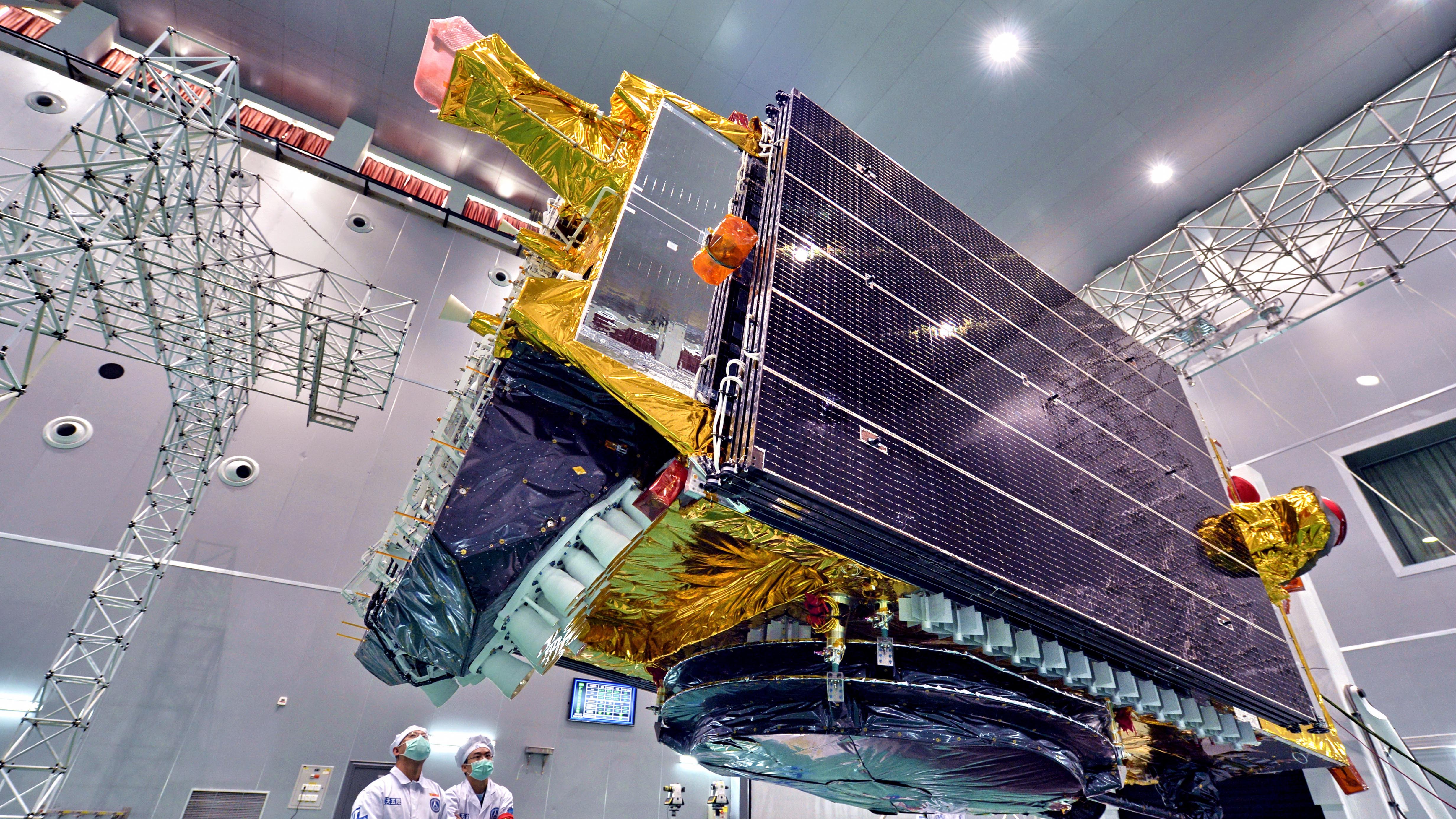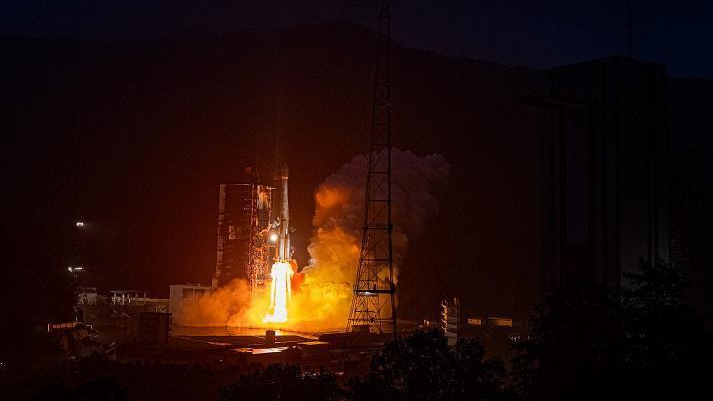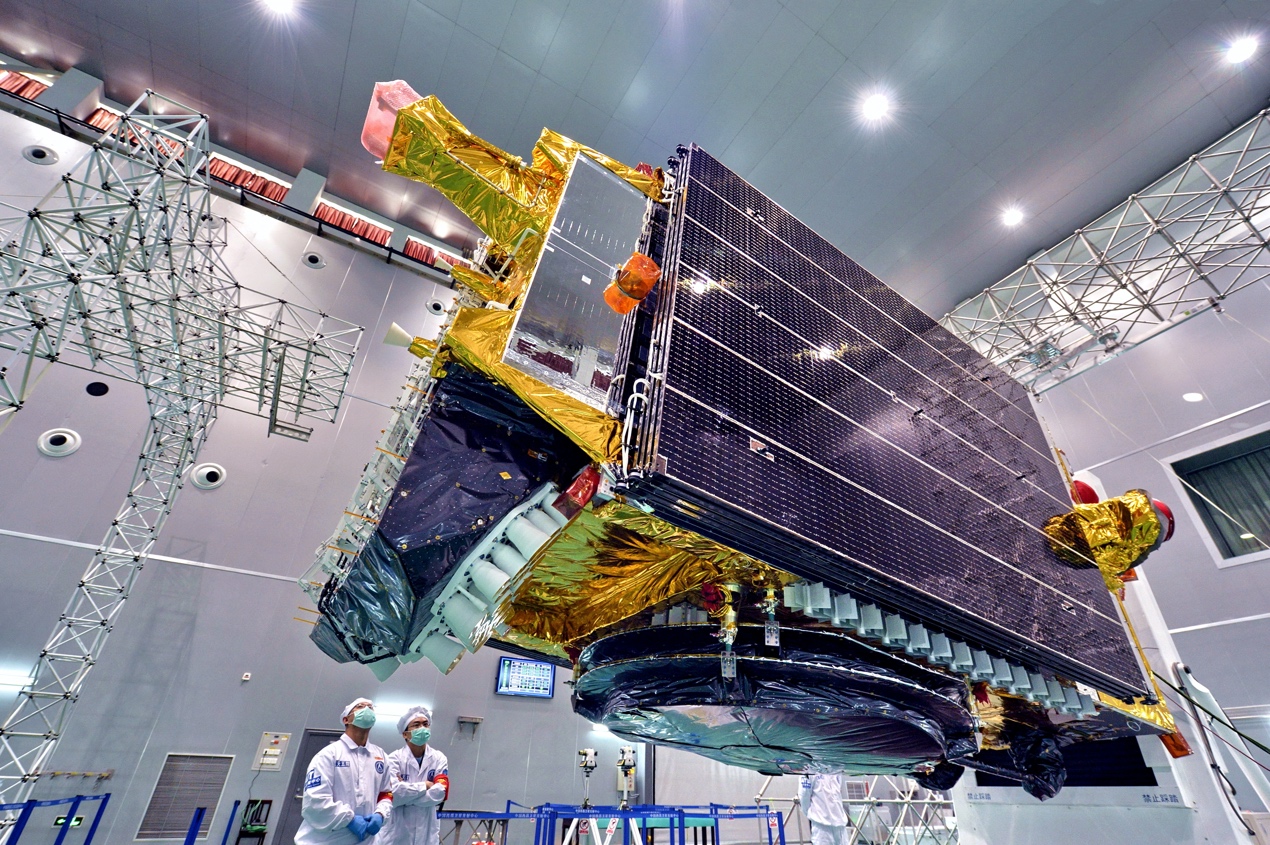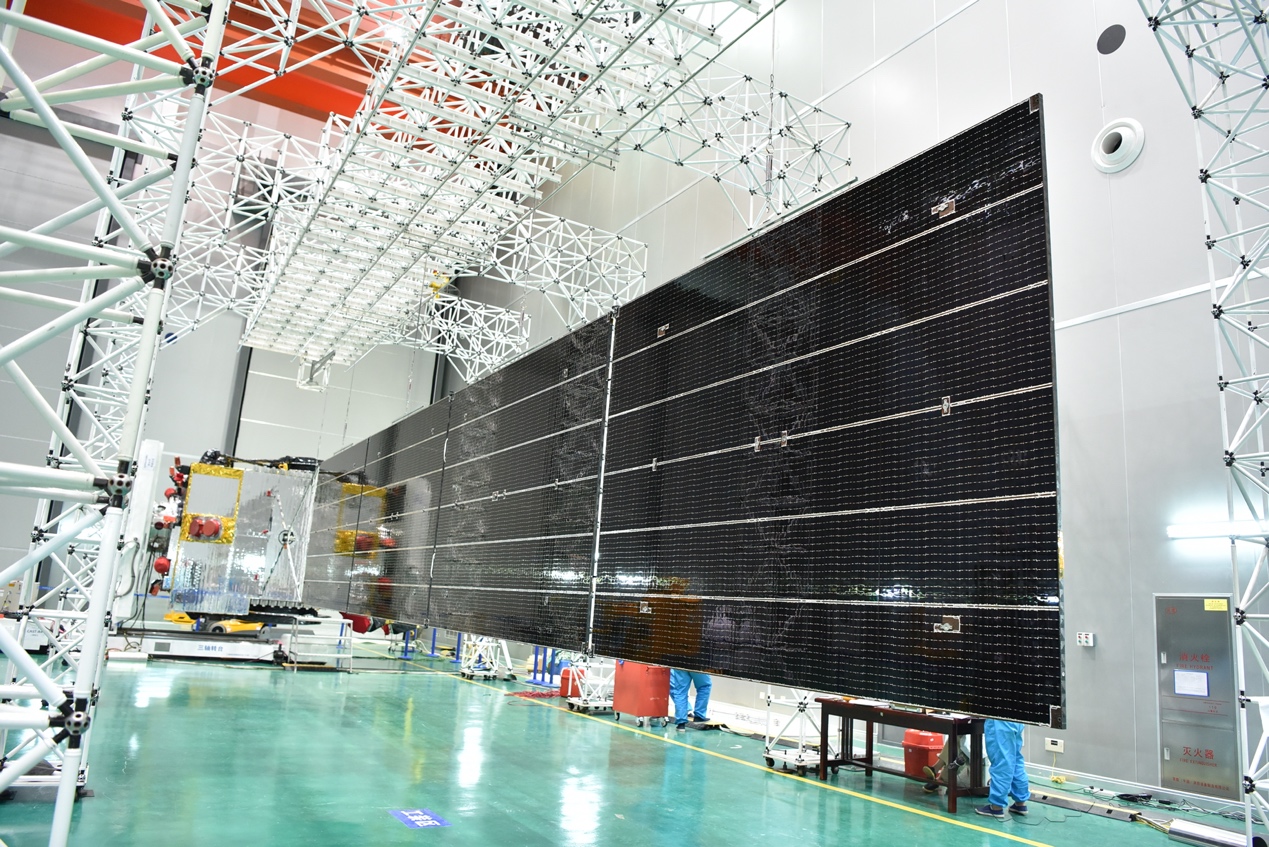00:29

China successfully launched its APSTAR-6D telecommunication satellite via a Long March 3B carrier rocket from Xichang Satellite Launch Center in southwest China's Sichuan Province at 8:11 p.m. on July 9.
The APSTAR-6D satellite is designed and manufactured by the China Academy of Space Technology (CAST), a subsidiary of the China Aerospace Science and Technology Corporation (CASC).

China launches the most advanced commercial communication satellite from Xichang Satellite Launch Center in southwest China's Sichuan Province. /CCTV
China launches the most advanced commercial communication satellite from Xichang Satellite Launch Center in southwest China's Sichuan Province. /CCTV
Wei Qiang, chief commander of the APSTAR 6D mission, said the whole team had to overcome many difficulties in key technologies such as Ku-band ultra-wideband multi-port power amplifier (MPA) and flexible switching of gateways. These core technologies have reached international advanced level.
The APSTAR 6D communication satellite mainly provides high-quality, efficient and economical all-region and all-weather satellite broadband communication services for users in the Asia-Pacific region, according to CAST.
It can be used for maritime communications, aviation airborne communications, land vehicle communications and fixed satellite broadband Internet access.

Testing the satellite in a factory. /CAST
Testing the satellite in a factory. /CAST
The APSTAR-6D, a geostationary satellite procured by APT Mobile SatCom Limited (APSATCOM), is part of China's first global high-throughput broadband satellite communication system.
The satellite is expected to provide high-quality broadband network and data communication services, with its footprint focusing on China and stretching from the Eastern Indian Ocean to the Western Pacific Ocean for users across the Asia-Pacific region.
Its development commenced in August 2016. Based on a DFH-4E platform, the satellite is designed to perform north-south station-keeping by electrical propulsion during its entire life cycle.
With a communication capacity of about 50 gigabits per second and single beam capacity of up to 1 gigabit per second, APSTAR-6D will serve its users with high-quality voice and data transmission.
Featuring with 90 user beams, the satellite is able to achieve global coverage within its field of view and reach a new height in payload mass, communication capacity and complexity, etc. The technical specifications and capabilities are up to worldwide advanced level.

The APstart 6D satellite is equipped with a new generation solar panel system. /CAST
The APstart 6D satellite is equipped with a new generation solar panel system. /CAST
The APstar 6D communication satellite is China's 11th whole star export commercial communication satellite and China's first Ku-band global high-throughput broadband satellite communication system.
It is also China's most complicated civil and commercial satellite with the largest communication capacity, most beam, maximum output power, representing the high level of China's high-throughput communication satellites' research and development capabilities.
CAST, the leading and primary entity responsible for the research and development of telecommunications satellite in China, developed the DFH series platform for communications, navigation and other purposes.
Evolving from the mainstream DFH-4 series platform, the DFH-5 high-capacity platform and the DFH-3 enhanced small satellite platform have come to fruition in response to different users' needs.
To date, CAST has successfully launched 11 commercial telecommunications satellites to international clients and the "intelligent manufacturing in China" has earned the recognition of more and more international satellite operators.
(CGTN's Pan Zhaoyi, Yan Meiyi also contributed to the story)